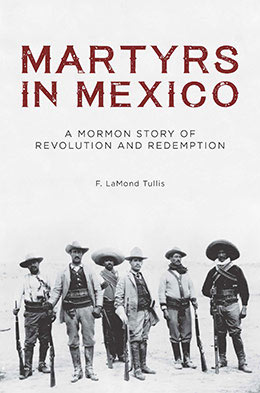Afterword
F. LaMond Tullis, "Afterword," in Martyrs in Mexico: A Mormon Story of Revolution and Redemption (Religious Studies Center, Brigham Young University; Salt Lake City: Deseret Book, 2018), 163–164.
Chronicling and interpreting other people’s lives is as formidable as it is interesting. Although the objective records (diaries, letters, journals, oral histories, publications, and interviews) frequently give a writer a good orientation to “who, what, when, and where,” infrequently do they offer direct evidence as to “why.” For example, why did Rafael Monroy and Vicente Morales not cave in to the demands of their executioners and renounce their faith, thereby possibly saving their lives? We assume it was because of their convictions about the veracity of the restored gospel and their concern about having an honorable relationship with God. However, we cannot know for sure what actually did go through their minds. But based on all the evidence we have seen, we have tried to interpret their likely thoughts. It is a challenge one sees throughout this monograph. Readers will necessarily judge for themselves whether the analyses offered here hit the mark on questions of “why.”
Entering people’s lives, as is done in this monograph, is both an emotional and scholarly experience. I have been distressed at life’s slights to some, the shortcomings of others, and the downright malevolent designs of several. Similarly, I have rejoiced over the tenacity of the faithful, their incessant desire to make the best of themselves, their condition in the light of Christ’s teachings, and their caring concern for one another during times of ultimate trial. If this monograph proves to be a faithful and honest portrayal of their life journeys, as I have endeavored to make it be, I will be forever grateful.
